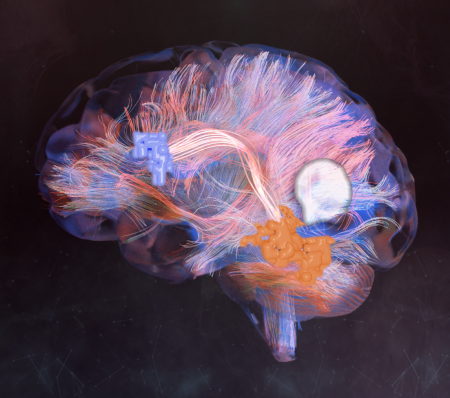SAP has come up with a lot of helpful resources related to BTP including use cases, case-studies, readily available services, pre-packed integration scenarios, tutorials and more says Prashant Pimpalekar.
Introduction
SAP has unleashed its campaign of ‘RISE with SAP’ and it has been received very well by SAP customers and ERP prospects worldwide. RISE with SAP transitions ERP data (in the form of SAP ECC6.0 on-premise or SAP S/4 HANA on-premise) to the cloud (public or private) with less risk and without compromise. The bundle of ERP software, transformation services, business platform and analytics is quite an attractive offer to SAP customers having hosted SAP on-premise.
This article delves into the business platform and analytics which is clubbed under ‘Business Technology Platform’ (hereafter called as BTP).
SAP BTP is a cloud-based platform-as-a-service (PaaS) offering from SAP, which provides a set of tools and services for developing, integrating, and extending SAP applications and solutions. SAP BTP supports various cloud deployment models, including public, private, and hybrid clouds, and allows developers to build, deploy, and run their applications using SAP’s cloud infrastructure.

Four pillars of SAP BTP – It encompasses various capabilities that are categorized into following four pillars:
1. Integration
This feature gives everything that is needed for agile business process innovation, extension, and integration in the cloud and in hybrid scenarios. You can easily integrate different systems, extend your current application, or create new solutions for your business needs with ideal user experience using the SAP Fiori interface. SAP Extension Suite provides various services that can be leveraged to build and extend SAP solutions. SAP Integration Suite (formally known as SAP Cloud Platform Integration -CPI Suite) lets you seamlessly integrate SAP and non-SAP solutions, both on-premise and in the cloud. SAP Integration Suite covers not only A2A and b2B integration scenarios but B2G(Business to Government) integration scenarios as well.
Currently, SAP provides over 2000+ pre-packed integration scenarios for different business processors. These out-of-the-box integration scenarios are ready-to-use, require minimum development effort, and cover a range of business process integrations. (Check out https://api.sap.com/ for details).
With the introduction of SAP Integration Suite, SAP PI/PO would be getting phased out in near future.
2. SAP Build
It enables everyone – no matter the skill level – to rapidly create and augment enterprise-grade apps, automate processes and tasks, and design business sites with drag-and-drop simplicity.
SAP Build brings together SAP Build Apps (formerly SAP AppGyver), SAP Build Process Automation (formerly SAP Process Automation), and SAP Build Work Zone (formerly SAP Work Zone) into a unified development experience with new innovations to rapidly build apps, automate processes and create business websites.
Low-code / No-code development – Low-code uses both a traditional programming language-based environment combined with no-code platforms and is used by developers with at least basic technical knowledge.
No-code is simpler, and it fully replaces the traditional programming language-based tooling with a suite of visual development tools (ex. drag-and-drop components) and can be used by technical and non-technical people alike.

3. Data and Analytics
The SAP Data sphere component enables accessing authoritative data, helps harmonizing heterogeneous data and thereby simplifies the data landscape.
The SAP Master Data Governance enables operating on high quality, consistent master data and established a comprehensive master data governance.
SAP Analytical cloud – It is a single solution for business intelligence and enterprise planning, augmented with the power of artificial intelligence, machine learning technology, and predictive analytics. It helps everyone in your organization make better decisions and act with confidence.
SAP Analytics Cloud removes silos, empowers business analysts, and unifies a company’s decision-making processes by combining business intelligence, augmented analytics, and enterprise planning into one product. It helps in achieving 360° insights with a single connected analytics platform.
4. Artificial Intelligence
It enables business applications and processes more intelligent with the power of AI on SAP Business Technology Platform. Its pre-trained AI models accelerate infusion of AI into Apps. It helps managing the AI model lifecycle into one central place and ensures AI deployment responsibly with transparency and compliance.
SAP solutions such as SAP Intelligent Robotic Process Automation (SAP Intelligent RPA) and machine learning let you automate the kind of complex, repetitive decisions that make up a significant portion of business processes.
Service Catalog – SAP has come up with a rich repository of readily available 96 services encompassing one or more of the four pillars mentioned earlier. They help in integrating and extending your solutions, optimizing your business processes, and thereby creating an engaging digital experience using SAP Business Technology Platform services. Just to give an idea, some of the services are listed below –
- Automation pilot – Simplify the operational effort behind any cloud solution in the SAP BTP.
- Cloud foundry runtime – It lets you develop polyglot cloud-native applications and run them on the SAP BTP Cloud Foundry environment
- Cloud Integration for data services – To integrate data between on-premise and cloud on a scheduled/batch-mode basis.
- Continuous Integration and Delivery (CI/CD) – It lets you configure and run predefined continuous integration and delivery pipelines that automatically build, test, and deploy your code changes to speed up your development and delivery cycles.
- Identity provisioning – Lets you manage Identity Lifecycle processes for cloud and on-premise systems
- Kyma runtime – Develop and run containerized applications and extensions on Kubernetes. Kyma runtime is a fully managed Kubernetes runtime based on the open-source project “Kyma”. This cloud-native solution allows the developers to extend SAP solutions with serverless functions and combine them with containerized microservices. The offered functionality ensures smooth consumption of SAP and non-SAP applications, running workloads in a highly scalable environment, and building event- and API-based extensions.
- SAP AI core – It enables building a platform for your artificial intelligence solutions. It is designed to handle the execution and operations of your AI assets in a standardized, scalable, and hyper-scaler-agnostic way. It provides seamless integration with your SAP solutions. Any AI function can be easily realized using open-source frameworks. SAP AI Core supports full lifecycle management of AI scenarios.
SAP BTP Deployment – Salient points
- Regions – You can deploy applications in different regions. Each region represents a geographical location (for example, Europe, US East) where applications, data, or services are hosted. A region is chosen at the subaccount level. For each subaccount, you select exactly one region. The selection of a region is dependent on many factors: for example, application performance (response time, latency) can be optimized by selecting a region close to the user. The global account itself is also running in a region.
- Environments – Environments constitute the actual Platform as a Service offering of SAP BTP that allows for the development and administration of business applications. Environments are anchored in SAP BTP on the subaccount level.
- Each environment comes equipped with specific tools, technologies, and runtimes that you need to build applications. So a multi-environment subaccount is your single address to host a variety of applications and offer diverse development options. One advantage of using different environments in one subaccount is that you only need to manage users, authorizations, and entitlements once per subaccount, and thus, grant more flexibility to your developers.
- SAP BTP can have one or more global accounts. Global accounts are associated with license or contract which your company has with SAP BTP. Global account takes care of the license and contract and whatever the activities you perform or how you are billed is managed by global account.
- Global accounts are linked with entitlements which are passed down to subaccounts. Entitlements are the kind of resources provided to you based on the license that you purchased.
- Sub account is the place where you will be creating your PaaS environment(cloud foundry/Kyma).
- SAP BTP Cockpit
- The SAP BTP cockpit is the central user interface for administering and managing your SAP BTP accounts as a platform user. To access the SAP BTP cockpit, you need to open a specific URL: https://cockpit..hana.ondemand.com. You can replace the region with the one you are operating in (for example: eu10, us10, ap10) to have a lower response time and latency to the cockpit. After logging in with your user credentials, you might get prompted with a pop-up to choose the global account you want to access. Of course, you are able to switch between the global accounts as and when needed.
- Working with the SAP BTP cockpit is the easiest way to manage and administer your SAP BTP accounts.
Conclusion
SAP has come up with a lot of helpful resources related to BTP including use cases, case-studies, readily available services, pre-packed integration scenarios, tutorials etc. BTP offers a rich load of tools/services which would enable your organization’s business transformation and expedite your digitization journey. It needs to be fully leveraged when you opt for ‘RISE with SAP’.
Prashant Pimpalekar
Sr. Vice President (SAP Practice)
Sify Digital Services Ltd.
In case you missed:
- None Found









